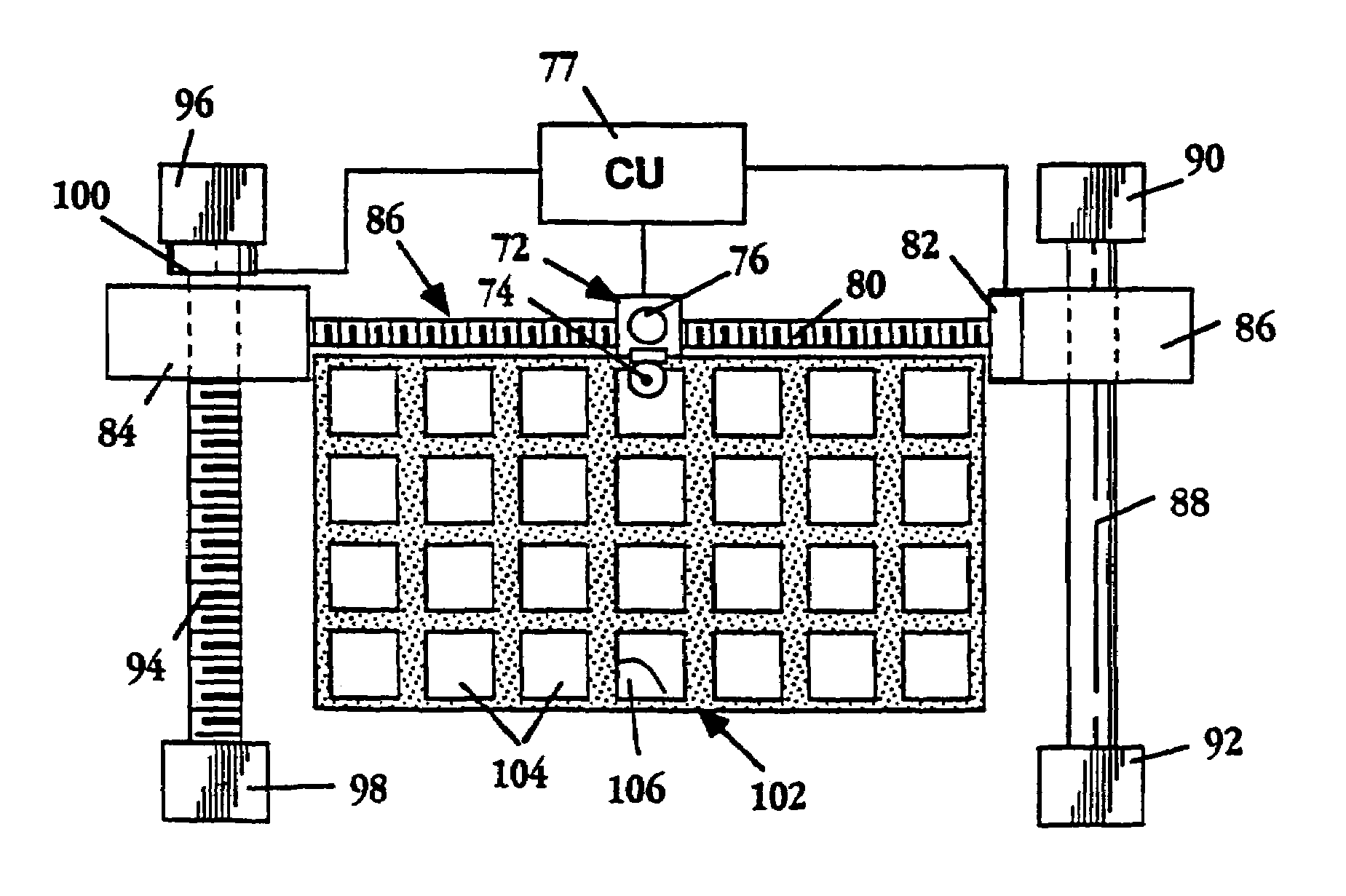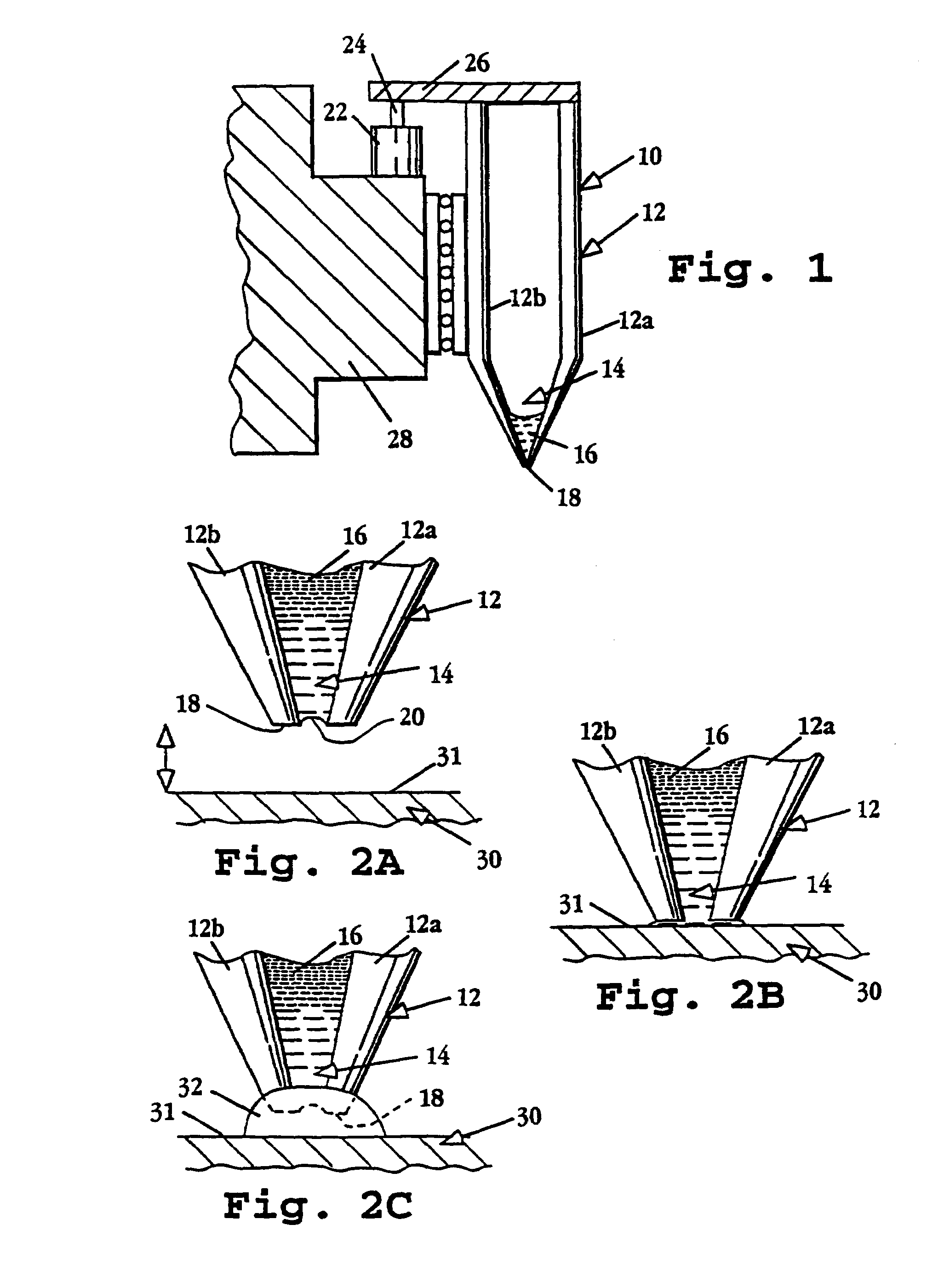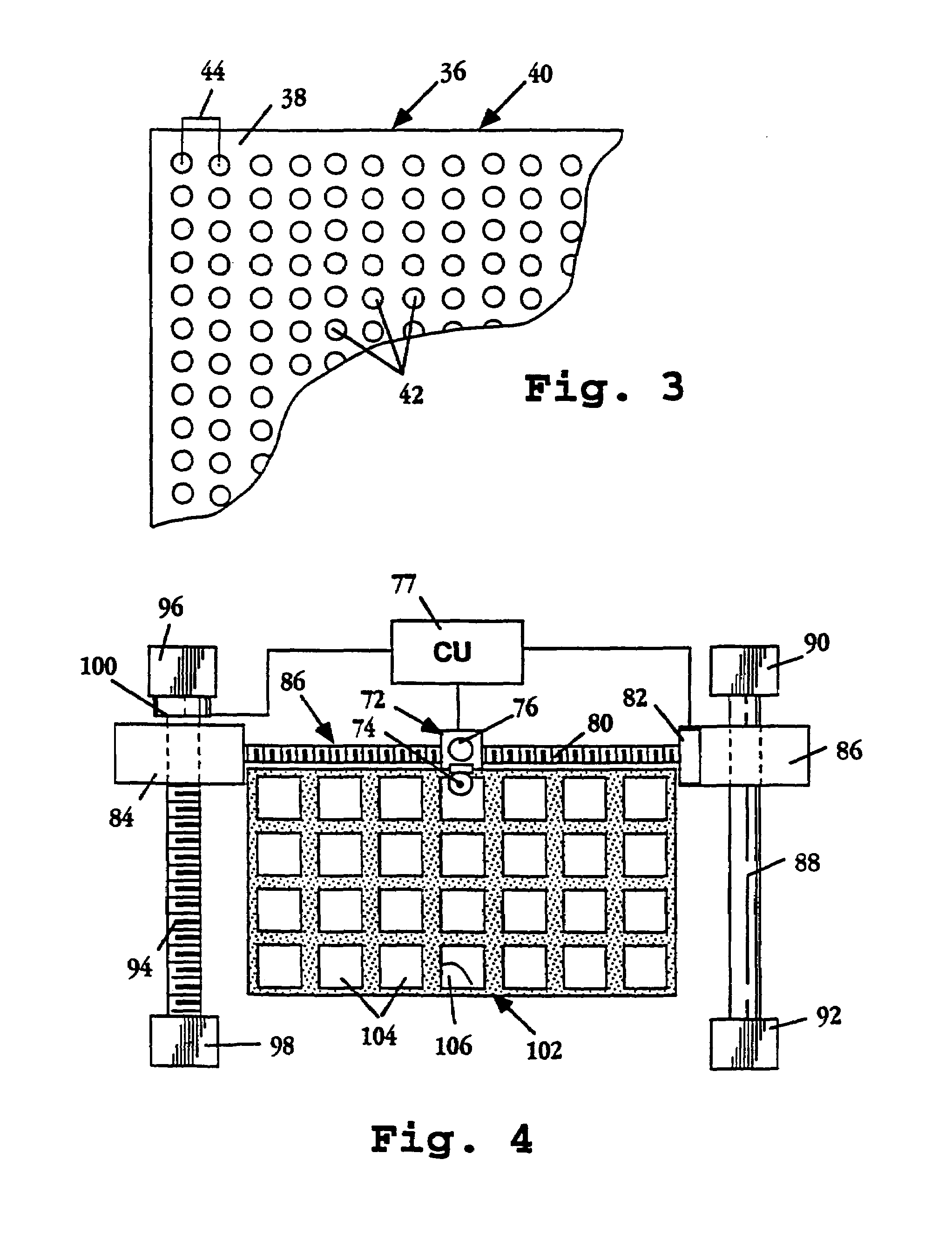Methods for constructing subarrays and subarrays made thereby
a subarray and subarray technology, applied in the field of methods and genearray devices, can solve the problems of laborious northern blots, unsuitable for diagnostic applications, unpractical for analysis of large numbers of genes, etc., and achieve the effects of increasing or reducing reporter levels, increasing or reducing gene level expression, and reducing gene expression level
- Summary
- Abstract
- Description
- Claims
- Application Information
AI Technical Summary
Benefits of technology
Problems solved by technology
Method used
Image
Examples
example 1
Single-Color Fluorescence Detection of Gene Expression Patterns Using Micro Arrays of Arabidopisis cDNA Clones
A. Generation of Target DNA Fragments
[0171]Target messenger nucleic acid DNA fragments were made by amplifying the gene inserts from 45 different Arabidopsis thaliana cDNA clones and 3 control genes using the polymerase chain reaction (PCR; Mullis, et al.). The DNA fragments comprising the PCR product from each of the 48 reactions were purified using “QIAQUICK” PCR purification kits (Qiagen, Chatsworth, Calif.), eluted in ddH2O, dried to completion in a vacuum centrifuge and resuspended in 15 μl of 3× sodium chloride / sodium citrate buffer (SSC). The capacity of the “QIAQUICK” purification kits is 10 μg of DNA; accordingly, each sample contained about 10 μg or less of DNA.
[0172]The samples were then deposited in individual wells of a 96 well storage plate with each sample split among two adjacent wells as a test of the reproducibility of the arraying and hybridization process...
example 2
Two-color Detection of Differential Gene Expression in Wild Type versus Transgenic Arabidopisis Tissue.
[0191]Differential gene expression was investigated using a simultaneous, two-color hybridization scheme, which served to minimize experimental variation inherent in comparing independent hybridizations. Two μg of wild-type Arabidopisis total cDNA that were labeled with fluorescein (as above) were combined with two micrograms of transgenic Arabidopisis total cDNA that were labeled by incorporating lissamine-5-dCTP (DuPont NEN) in the reverse transcription step and hybridized simultaneously to a microarray containing the same pattern of spotted cDNAs as described in Example 1.
[0192]To test whether overexpression of a single gene could be detected in a pool of total Arabidopisis mRNA, methods of the invention were used to analyze a transgenic line overexpressing the transcription factor HAT4 (Schena, et al.). The transgenic Arabidopisis tissue was known to express HAT4 at levels of 0...
example 3
Two-color Detection of Differential Gene Expression in Root versus Leaf Tissue.
[0196]In a similar experiment using the same labeling and hybridization procedures described above, 2 μg of total cDNA from Arabidopisis root tissue labeled with fluorescein were combined with two micrograms of total cDNA from Arabidopisis leaf tissue labeled with lissamine and were simultaneously hybridized to a microarray containing the same pattern of target sequences described above. The acetylcholine gene mRNA was added to both poly-A total mRNA samples at 1:1,000 to allow for normalization of fluorescence intensities. The glucocorticoid and TRP4 controls were added to the hybridization probe as before. The results are shown in FIGS. 9A and 9B, discussed above.
PUM
| Property | Measurement | Unit |
|---|---|---|
| area | aaaaa | aaaaa |
| diameters | aaaaa | aaaaa |
| diameters | aaaaa | aaaaa |
Abstract
Description
Claims
Application Information
 Login to View More
Login to View More - R&D
- Intellectual Property
- Life Sciences
- Materials
- Tech Scout
- Unparalleled Data Quality
- Higher Quality Content
- 60% Fewer Hallucinations
Browse by: Latest US Patents, China's latest patents, Technical Efficacy Thesaurus, Application Domain, Technology Topic, Popular Technical Reports.
© 2025 PatSnap. All rights reserved.Legal|Privacy policy|Modern Slavery Act Transparency Statement|Sitemap|About US| Contact US: help@patsnap.com



